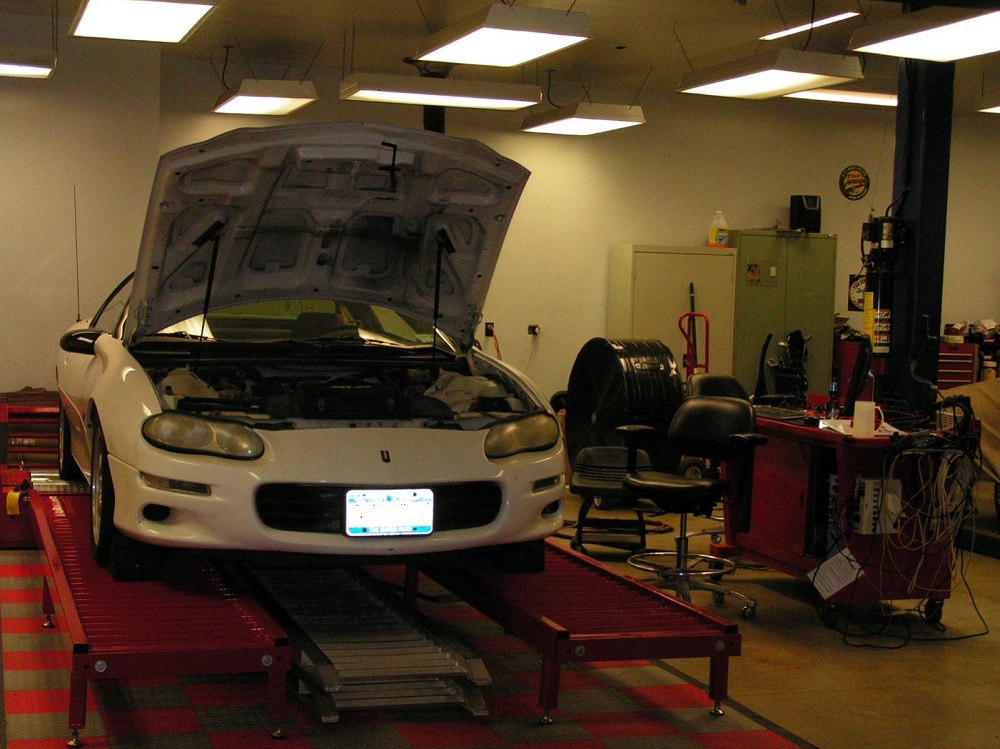Hot Rod Drag Week Competitor Dies While Preparing Car
Tragedy reminds us to take precautions when working with nitrous. Check out our safety tips before your next project.
In early September, Hot Rod Drag Week competitor Mike Wenzler died from head injuries sustained while filling a nitrous bottle for his seven-second Chevy Camaro.
In the last two years, Wenzler and his old-school Pro Stock-style F-Body had become favorites of fans, competitors, and particularly of Hot Rod Drag Week announcer Brian Lohnes. Wenzler was the apex of hot rodders, a man who built a big-engine, big-nitrous hammer of a street car with his own hands.

There’s no shortage of love for Wenzler and his car. Hot Rod Network posted a great feature earlier this year and its writer, Thom Taylor, also conducted a great interview with Wenzler inside the car in 2016. Lohnes also eulogized Wenzler on BangShift.
All of it is good and all of it reaches a consensus: Wenzler’s death is a huge loss. He will be sorely missed by the drag-racing community.
That such a tragedy happened to an experienced nitrous racer makes it harder to swallow. Wenzler knew what he was doing with N2O, yet he was believed to have been struck in the head by a hose or fitting while filling the Camaro’s nitrous bottle.
Nitrous safety
We hate that something awful like this happened, and we have no reason to suspect that Wenzler was doing anything unsafe. Sometimes, freak accidents happen and they’re heartbreaking. However, we hope this can help remind our readers to take proper precautions with nitrous installation and refills.
We pulled together some nitrous-handling safety tips from a couple of OEM instructions (ZEX and NOS) as well as a Super Chevy article. As always, consult with the nitrous-kit manufacturer and/or installer for system-specific tips. Here are some things to keep in mind:
- Nitrous and fuel lines are often pressurized. Treat them with respect; wear safety glasses and gloves when working with them.
- Be careful with the bottles. Don’t drop them or hit them. Also, never transport loose cylinders in the back of a car or truck. They can become missiles if things go wrong.
- Do not tinker with or modify the safety-relief disc or any other such parts on the cylinder valve.
- Never overfill the cylinders or run excessive pressures in the bottle. If nothing worse happens, you’ll at least blow some of it out the safety-relief valve when the bottle warms up.
- Close the nitrous-bottle valve when you’re not using it and relieve line pressure.
- When running nitrous, if something feels off or wrong, lift off the throttle and deactivate the nitrous system. It’s better to troubleshoot than to nuke your engine or worse.
- Make sure the threads fit correctly on the system and that any AN fittings aren’t overtightened.
- Mount the bottle securely in the car, per manufacturer instructions.

General garage safety tips
We also know that the offseason (winter) is approaching and that means more shop time. Sometimes, the comfort of home means adhering to more lax working conditions than should be. With more time in the shop over the winter, consider the following general safety tips. We know a lot of this is rudimentary, but sometimes things bear the occasional reminder.
- Work with a partner if you can. We know it’s not always possible, but if you can, have someone else around who can help you in case of a serious injury. If they’re totally clueless, show them things like how to use a jack.
- Keep a charged, current fire extinguisher at an easily accessible place.
- Wear safety glasses and gloves: Rust flakes in the eye and oil in cuts? Not fun.
- Always lift the car properly. If you don’t have a hydraulic lift, use jack stands or ramps on a level, solid surface. Once you have it lifted, shake the car to make sure it won’t fall off the jacks.
- Be mindful of the cooling fan if you’re under the hood. You can pull a fuse if you think it’ll be problematic.
- Exercise care around the radiator cap, radiator hose, fuel lines (especially if you’re breaking out the welder), and brake lines.
Neither of those lists is exhaustive, but we want our reader to work safely on their projects and in their shops.
